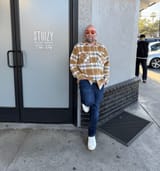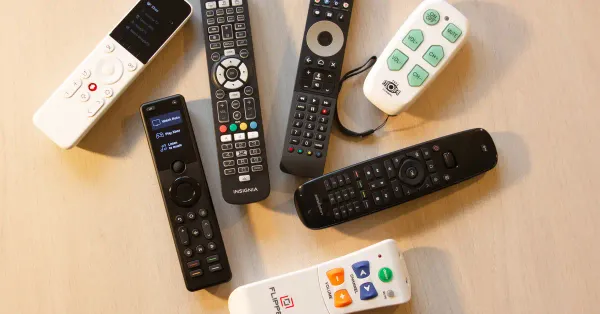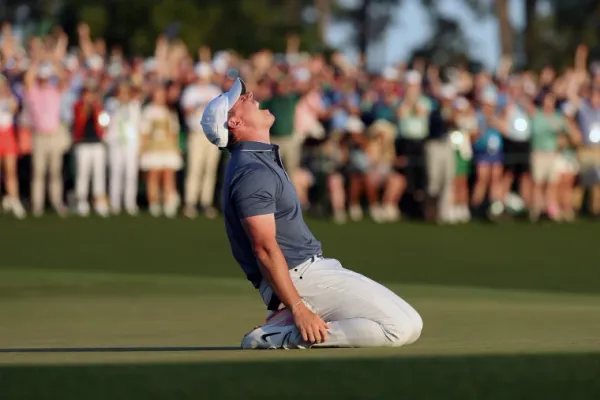I didn't write this (AI did)
In case you wanted to see how far we've come...

Sometimes, I like to throw basic sports questions at various artificial intelligence chatbots. I don’t know why, really. I guess to laugh at how stupid the answers usually are or to just gauge the chatbots against each other.
Anyway, I hadn’t done it in a while. I’ve been busy. But I’ve stayed up on how fast artificial intelligence is progressing, so you think I would’ve been prepared for the result today when I threw this basic question at my current favorite chatbot…
What should the San Diego Padres do about their catcher position?
Below the dividing line below is the answer that it spit out, unedited. I am positive that a human being could’ve done better, but it still passes as reasonably consistent with the quality of most sports blog posts. I found that to be incredible, and so I wanted to share it with all of you.
(NOTE: It also provided me with the 25 sources that it used to build its knowledge base before answering, and you may notice some of them being linked to within the answer as footnotes.)
Addressing the San Diego Padres' Catcher Position: Strategic Options for 2025 and Beyond
The San Diego Padres find themselves at a critical juncture regarding their catching situation as the 2025 MLB season approaches. Following the departures of Gary Sánchez to the Baltimore Orioles and Kyle Higashioka to the Texas Rangers, the Padres are facing significant uncertainty behind the plate, with no clear-cut starter emerging from their current options. This position has been identified as a glaring weakness that could undermine the team's competitive aspirations in an increasingly challenging National League West division. The organization must now carefully evaluate both short-term solutions and long-term development plans to solidify this crucial defensive position while maintaining offensive production and providing essential leadership for their pitching staff.
Current Catching Landscape and Internal Options
The Padres' catching corps currently consists of Luis Campusano, Brett Sullivan, Elias Díaz, and Martin Maldonado, none of whom have firmly established themselves as everyday major league catchers1. Manager Mike Shildt has emphasized that leadership qualities will be a determining factor in deciding the starting role, describing the catcher as "the quarterback of the team" who significantly influences pitcher performance and team success1. This perspective underscores the multifaceted requirements of the position beyond mere statistical production. Shildt specifically noted, "The catcher really is the quarterback of the team. It's also really the only position that being a good teammate allows other teammates to have success"1. This philosophy suggests the organization values game management and pitcher relationships as highly as offensive contributions.
Luis Campusano represents perhaps the most intriguing internal option with the highest ceiling among current roster candidates. Under team control through 2028 with free agency not arriving until 2029, Campusano offers significant contractual value compared to external acquisitions5. His offensive potential has never been questioned, but his defensive development has been a work in progress throughout his professional career. More encouraging signs emerged during the 2023 season when pitchers like Blake Snell and Joe Musgrove began to praise his work behind the plate after previous concerns about his receiving abilities4. However, significant deficiencies remain in controlling the running game, with Campusano having thrown out just one baserunner in 42 career stolen base attempts as of late 2023 - a three percent success rate that sits drastically below the league average of approximately 19 percent4.
Martin Maldonado joined the organization on a minor league contract following a disastrous offensive performance with the Chicago White Sox in 2024, where he batted a mere .119 in 48 games2. Despite these offensive limitations, Maldonado brings valuable veteran experience and defensive acumen that could provide mentorship to younger catchers while serving in a backup role. Brett Sullivan remains another internal option, though he has yet to establish himself as more than a potential backup at the major league level. The presence of Elias Díaz adds another experienced option to the mix, though none of these alternatives inspires tremendous confidence as everyday solutions1.
Strategic Importance of the Catching Position
The significance of finding a quality solution behind the plate extends beyond individual performance metrics. The Padres' pitching staff relies heavily on having competent game-callers who understand their tendencies and can optimize their performance. Manager Shildt emphasized this relationship, stating, "The catching position has a real influence on the pitcher's career to some degree. And so the ability to understand how to game plan, how to run a game, how to do all the intangibles that come with the catching position, including some of the positioning things and having an overall game awareness is really important"1. This perspective aligns with baseball's increasing recognition of a catcher's defensive value beyond traditional statistics.
The organizational philosophy appears to prioritize defensive capability and leadership at the position, which may influence their ultimate solution. Historical precedent suggests that championship teams often feature veteran catchers who excel in managing pitching staffs even when their offensive contributions are modest. Examples cited within the organization include Sandy Leon with the Red Sox, Brian McCann with the Astros, and David Ross with the Cubs - all veteran presences behind the plate for World Series champions3.
External Acquisition Possibilities
Given the uncertain internal options, the Padres have explored external additions to strengthen their catching situation. In January 2025, reports indicated that San Diego held trade discussions with the Minnesota Twins regarding Christian Vazquez2. Entering the final year of a three-year contract due to pay him $10 million in 2025, Vazquez represents an established veteran presence who could immediately upgrade the position despite his modest offensive production (.221/.248/.327 with the Twins in 2024)2. Financial considerations would likely be central to any such transaction, with the Padres potentially seeking assistance from Minnesota in covering a portion of Vazquez's salary to accommodate their budgetary constraints.
The trade market may offer additional opportunities beyond Vazquez, though the winter activity period has largely passed by March, leaving fewer obvious candidates and increasing acquisition costs as teams become more reluctant to part with established players nearing the regular season. The free agent market has been similarly depleted by this point in the baseball calendar, with most quality options already finding homes for the upcoming season. This timing disadvantage may force the Padres to accept a less-than-ideal solution for 2025 while developing longer-term plans.
Financial constraints appear to be a significant factor in the Padres' decision-making process. Kyle Higashioka, who departed for Texas, was playing on a relatively modest one-year deal worth approximately $2.18 million in his final season with San Diego5. Finding comparable value at similar cost represents a challenge, particularly given the specialized nature of the catching position and the limited supply of quality options. This economic reality may push the Padres toward a committee approach that maximizes platoon advantages while accepting certain defensive limitations.
Prospect Development Timeline
The long-term picture at catcher for the Padres revolves significantly around highly-touted prospect Ethan Salas. While not mentioned in the most recent March 2025 reporting, earlier discussions of the organization's catching future prominently featured Salas as the presumptive "catcher of the future"5. However, developmental considerations suggest patience rather than acceleration of his timeline. Fan discussions from 2024 indicate that Salas likely needs additional minor league seasoning, with 2026 viewed as a more realistic target for his major league debut than 20255.
The development of catching prospects typically requires extra patience compared to other positions due to the complex defensive responsibilities and game-management aspects that must be mastered. As one fan noted, "Many highly touted C prospects end up as just serviceable big league catchers or flame out altogether. It's the hardest position on the field"5. This reality suggests the Padres should avoid making premature commitments based on Salas's potential, instead focusing on creating a bridge solution that maintains competitiveness while allowing proper development time.
Short-Term and Long-Term Strategic Options
The Padres face a multifaceted decision requiring both immediate attention for 2025 competitiveness and longer-term planning for sustainable success. Several approaches warrant consideration, each with distinct advantages and limitations.
For the immediate 2025 season, a strategic platoon system utilizing Campusano's offensive potential while maximizing the defensive strengths of veterans like Maldonado could represent a pragmatic approach. This would involve careful matchup planning to ensure that pitchers work with their preferred catchers while optimizing offensive output against specific opposing pitchers. Such an approach acknowledges the reality that the "perfect" catching solution may not be available, but a well-managed committee could collectively provide adequate production.
In terms of external additions, continuing to pursue trade possibilities like Vazquez makes sense, but with careful attention to financial implications and acquisition cost. The Padres must avoid depleting their prospect depth for a short-term solution if that acquisition doesn't also fit their longer-term timeline. A veteran on an expiring contract might prove most logical if the internal belief is that Salas could be ready by 2026, creating a natural transition period rather than a position logjam.
Balancing Development with Competitive Needs
The Campusano situation demands particular strategic consideration. Still relatively young and with team control extending through 2028, he represents both present value and future potential. His offensive capabilities generally exceed those of defense-first veterans, but his throwing limitations create significant vulnerability in an era of aggressive baserunning. The organization must determine whether his defensive development has reached its ceiling or if continued improvement remains possible with specialized coaching and experience.
Some observers have cautioned against prematurely moving on from Campusano despite his inconsistencies. One perspective noted, "The one thing is...do we trade/get rid of Campy and then watch him turn into Yasmani Grandal? Likely scenario"5. This references the organizational history of having traded Grandal before he developed into an All-Star caliber catcher elsewhere, a cautionary tale about patience with developing catchers. Others express confidence that Campusano simply needs more consistent playing time, suggesting, "He'll get more consistent. Even with his performance being down compared to expectations this year, he still hits better than most of these Mendoza line catchers out there"5.
Conclusion and Recommendations
The Padres' catching situation demands both immediate attention and strategic foresight as they balance 2025 competitiveness with long-term development. Based on the available information, a multi-faceted approach appears most prudent. In the immediate term, the organization should continue exploring modest trade acquisitions that could provide stability without excessive financial commitments or prospect costs. Christian Vazquez represents one such option if the Twins prove willing to subsidize a portion of his $10 million salary, though other candidates with more modest financial profiles should also be considered.
Internally, the Padres should implement a structured development plan for Luis Campusano focused specifically on improving his throwing mechanics and baserunner control, his most glaring defensive deficiency. Targeted coaching in this area could significantly enhance his overall value while leveraging his existing offensive capabilities and growing rapport with the pitching staff. A carefully managed platoon system that pairs Campusano with a defense-first veteran like Maldonado could maximize strengths while minimizing vulnerabilities.
For the longer term, maintaining patience with Ethan Salas's development timeline remains crucial, avoiding the temptation to accelerate his arrival based on major league necessity rather than developmental readiness. The organization should aim to create a smooth transition period, potentially targeting the 2026 season for Salas's introduction to the major league level with limited pressure and managed expectations. This approach acknowledges the specialized challenges of the catching position while maintaining competitive aspirations for both present and future seasons.




